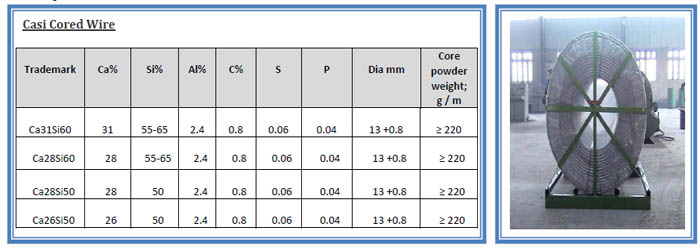Steel Industry
We have complete range of products for EAF, IF and LF such as burnt magnesia bricks for backup application, MgO-C bricks for all areas, Dry Ramming mass and Basic Gunning material. Dolomite based fettling masses, hot condition for repairing worn out areas of bottom & bank of EAF. This dolofet is based on dolo sinter having high purity and high bulk density which is achieved through high temperature firing. We also provides High alumina castable and brick for EAF roof as per requirement of customers. We have expertise in design and installation of all the furnaces refractories.

Steel ladle We have wide range of refractories for steel ladle application. These refractories are pitch/resin-bonded dolomite, MgO-C, Alumina magnesia carbon, burnt alumina spinel, high alumina and fired magnesia chrome brick. Precast pre-fired well block/seating block, castable/ramming masses for fixing well block/seating block, ladle bottom periphery and top tightening application are Manufactured by TRL Krosaki. High alumina and basic bricks are also offered for ladle back up application. Besides supply of refractories., We have expertise in design and installation of ladle refractories. We offers tailor made solutions in order to design cost effective lining to meet specific customer requirements. We works with several customers based on Total Ladle Management concept. We offers different types of ladle gas purging refractories as well as slide gate refractories for flow control of steel.
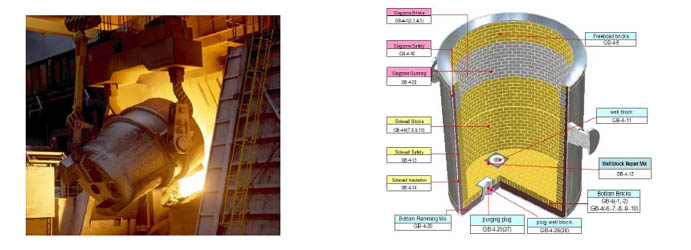
SLIDE PLATES & ACCESSORIES We offer wide range of slide plates (magnesia, alumina-carbon, alumina-zirconia carbon, Magnesia-spinel etc), ladle nozzles ( alumina based, magnesia – graphite base), collector nozzles, porous plugs (random & directional type), zircon nozzles, seating blocks, well blocks, sleeves, slide plate fixing masses etc. These products are manufactured from highest purity synthetic raw material & processed by using most modern manufacturing equipments. TRL Krosaki products are consistently giving multiple heats & serving the needs of steel plant ladles, tundish etc. We also provides slide gate manaWEment services to the customers which include supply and maintenance of system, material supply and round the clock expert supervision services

Tundish The production of steel through continuous casting route has increased considerably as it provides a number of advantaWEs over conventional ingot casting. Currently, the world steel production through continuous casting route is about 95%. In continuous casting, tundish is the last refractory lined unit through which molten steel passes into the mould. In the early staWE, tundish was used as steel distributor and retainer. Later on, it has been made larWEr in capacity to stabilize the operation of high speed casting and improving the quality of steel with an emphasis on the removal of inclusions. Various refractoriness associated with tundish we supply are: (a) Tundish lining materials (Permanent and working lining)
(b) Dams & Weirs
(c) Impact pad
(d) Flow control system (Monoblock stopper or tundish slide gate)
(e) Pouring stream protection between tundish and mould (Shroud or SEN)
(f) Tundish nozzle
(g) Seating block
.
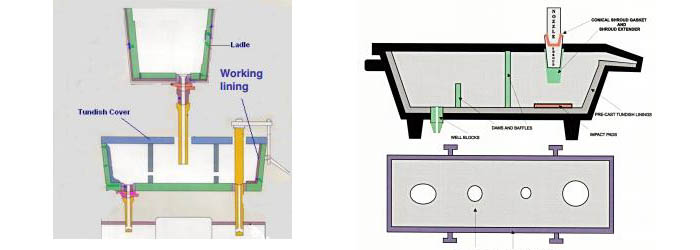
Refractory Hex grates, Anchors, and accessories.
HEXGRATE – Hexgrate is hexagonally formed mesh, specifically developed as reinforcement of different fire-proof lining and ground surfaces. It is used as a thin walled anchorage to the positing of fire proof refractory materials.
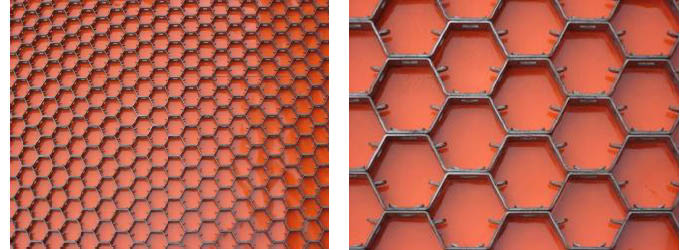
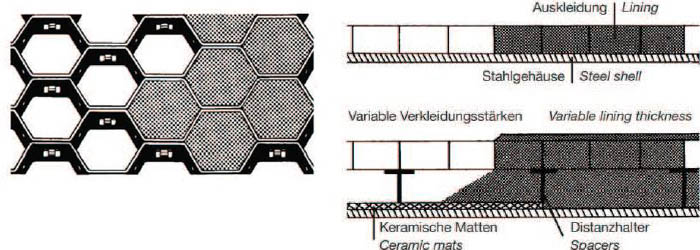
Refractory Anchoring System Made from round bar. The quality and service life of refractory linings depend to a large extent on the anchoring system. Therefore, it is essential to make sure that the anchor design and material are suitable for the application in question. The advantage of anchors made from round bars is their corrosion resistance attributed to the circular cross-section.
Primary material: Stromberg produces anchors made from round bars in the following diameters: 6, 8, 10 and 12 mm. Only solution heat treated wires that comply with the tolerances specified in DIN EN 10278 (DIN 671) are used. Our standard materials:
• AISI 304, 1.4301
• AISI 309, 1.4828
• AISI 314, 1.4841
• AISI 310, 1.4845
*other materials available on request.
Plastic end caps
All our anchors can be delivered with free
(PE) plastic end caps – fitted or supplied
loose.
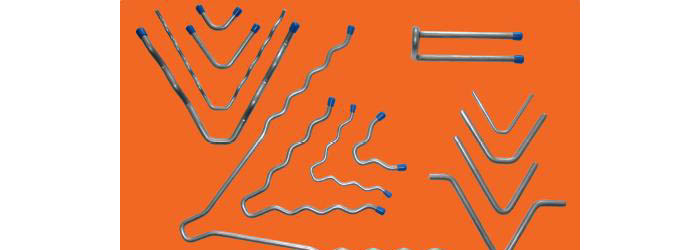
Heat Insulating Materials, Ceramic boards and Blankets.
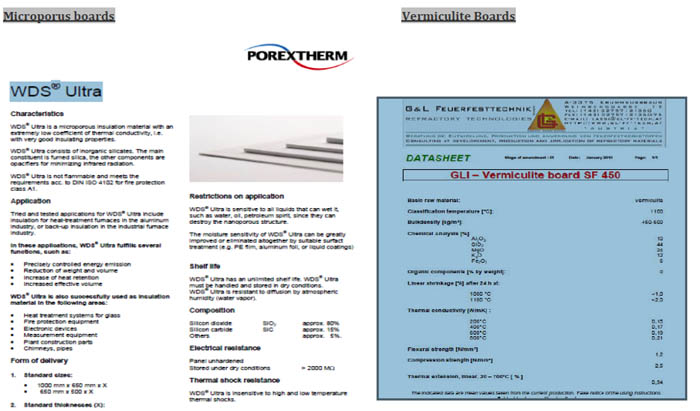
Ceramic Blankets We are also leading supplier of high-temperature insulation products providing innovative heat manaWEment solutions and energy savings for a broad ranWE of industries. Our well-known ceramic fiber products, soluble fiber products and other high performance insulation products provide substantial improvement in thermal performance of Steel Industries,
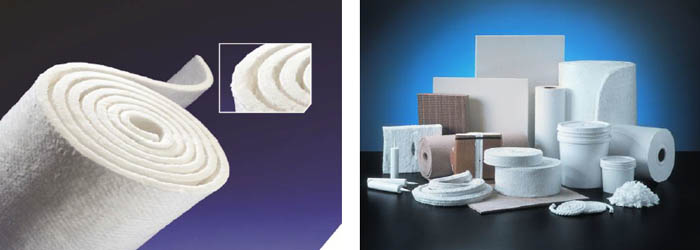
Raw Materials – We the WE are one of the India’s Leading Supplier of Ferro Allows and our major raw
Materials for Steel Industry, Some of our major products are followings.
1. Fluorspar - CaF2
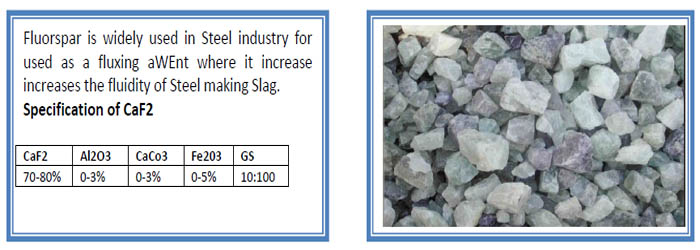
2. Ferro Manganese – FeMN & Ferro Silicon FeSi.
We Supply Ferro Manganese and Ferro silicon in different grades. These carbon ferromanganese are very important as an additive to cast irons
for controlling the initial content of manganese and silicon. Our product, Ferro manganese & Ferro silicon are ideal for making special steel
products. The high carbon Ferro manganese is used as a de oxidizer for steel tools and Ferro silicon is used in the production of corrosion
resistant & high-temperature resistant ferrous silicon alloys.
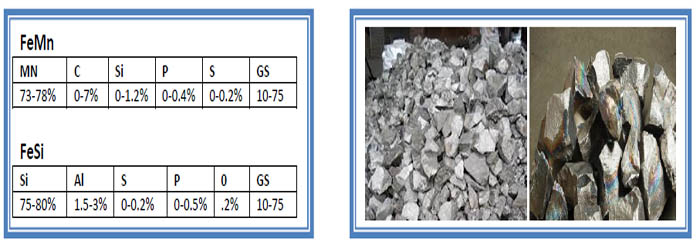
Subsidiary Raw Materials
Carbon Injection Materials – The technique of Foaming Slag in the EAF is used to increase productivity, lower operating costs and increase the quality of steel produced. The Foamy Slag Practice using carbon has become standard practice for most EAF melting. Carbon combines with oxyWEn in the slag or in the molten steel (introduced via lance) and generates CO and CO2. This is an exothermic reaction which WEnerates heat – BTU’s. The evolved gasses cause the viscous slag to boil and expand dramatically in volume
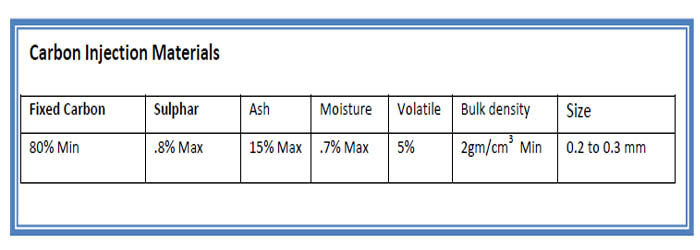
Lump Coke – (Charge carbon) Charge Carbon is added to the Furnace to consume excess oxygen in the melt down period. This means that Charge Carbon is a sacrificed material so minimizing cost of Charge Carbon is important. The primary purpose of Charge Carbon is to provide a reducing atmosphere during melting which minimizes the oxidation of alloys and metallic’s. During the melting process iron and other metallic oxidize and the presence of carbon provides a means of consuming the oxygen in the furnace (carbon is an oxygen scavenger), minimizing oxidation losses of iron and alloys.
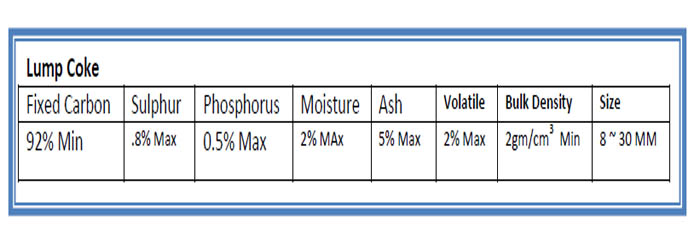
Recarburizer – Carbon is used in steel making to add carbon points to the steel. The ideal place to add the carbon for Recarburizer is in the ladle. With the introduction of Ladle Refining Stations (Ladle Met Stations) most EAF steel makers add Recarburizer to the ladle after tapping from the EAF. Depending on the grade of steel being made and the subsequent process the steel will be subject to (casting, rolling, atomizing) considerations for Recarburizer materials can be carbon content, sulfur content and gas content. The application of Recarburizer can be by bag toss, injection or cored wire. The amount of Recarburizer will be determined by the melting practice, grade of steel and subsequent processing.
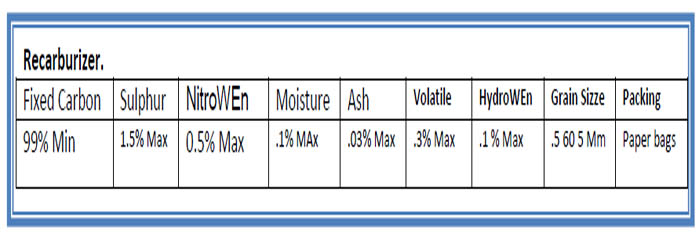
Casi Cored Wire – Ca-Si steel feed line can be changd shape of inclusions in steel, Ca can be used with high melting point of 2030 ℃ Al 2 O 3 a chain melting synthetic calcium aluminates, the shape of the smallest, is conducive to isotropic steel. Furthermore, CaO is formed with Si in the steel temperature is liquid silicate, excluding floating inclusions beneficial to reduce inclusions in steel.
